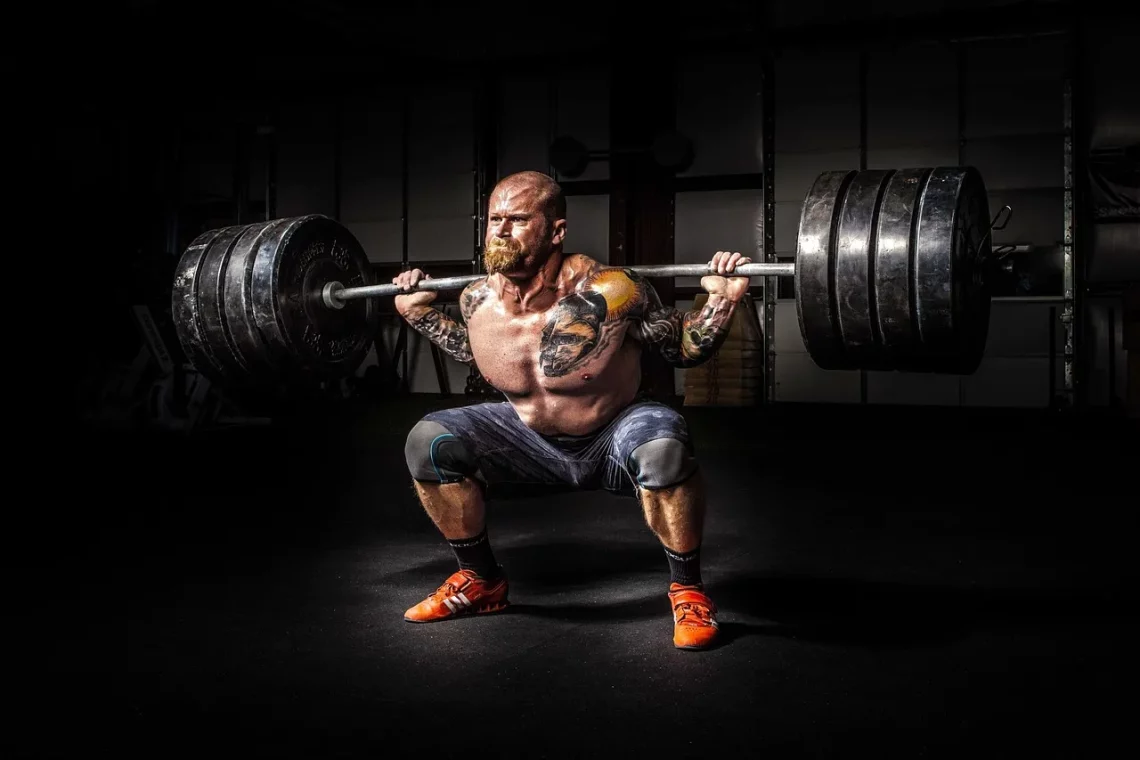
Understanding the Importance of the Lateral Row in Fitness Training
Fitness training has evolved significantly over the years, becoming an integral part of many people’s lives. As individuals seek to improve their physical well-being, understanding the mechanics of various exercises is crucial. One of the key components often overlooked in fitness routines is the lateral row. This exercise not only enhances overall strength but also plays a vital role in developing functional fitness.
When we engage in physical activities, the body relies on a complex network of muscles to perform movements. The lateral row, in particular, targets several muscle groups, including the back, shoulders, and arms, making it an essential exercise for achieving balance and strength. Additionally, this movement is fundamental for athletes and fitness enthusiasts alike, as it can enhance performance in various sports and activities.
The importance of incorporating exercises like the lateral row into a fitness regimen cannot be understated. As we delve deeper into the mechanics and benefits of this exercise, it becomes clear that it serves not only to build muscle but also to promote overall health and well-being. Understanding its significance can empower individuals to make more informed choices about their training routines.
The Benefits of Lateral Rows for Muscle Development
Lateral rows are a compound exercise that primarily targets the muscles of the upper back, including the latissimus dorsi, rhomboids, and trapezius. These muscles are essential for maintaining good posture and overall upper body strength. When performing lateral rows, the pulling motion engages multiple muscle groups, leading to improved muscle coordination and balance.
One of the most significant benefits of lateral rows is their ability to enhance muscle hypertrophy. By utilizing a variety of resistance levels, individuals can challenge their muscles to adapt and grow stronger over time. This exercise is particularly effective for building width in the back, contributing to the coveted V-taper appearance that many fitness enthusiasts strive for.
In addition to muscle development, lateral rows improve functional strength. This type of strength is crucial for everyday activities, such as lifting objects, reaching overhead, or even performing sports-specific movements. By strengthening the muscles involved in these actions, individuals can reduce their risk of injury and enhance their overall performance.
Moreover, lateral rows can be adapted to various fitness levels. Whether using resistance bands, dumbbells, or cable machines, individuals can modify the exercise to suit their capabilities. This versatility makes it an excellent addition to any fitness program, from beginners to advanced athletes.
To maximize the benefits of lateral rows, proper form is essential. Engaging the core, maintaining a neutral spine, and ensuring controlled movements will promote safety and effectiveness. Incorporating this exercise into a regular workout routine can lead to noticeable improvements in strength, muscle tone, and overall fitness.
Incorporating Lateral Rows into Your Workout Routine
To effectively integrate lateral rows into a fitness regimen, it’s essential to consider the overall structure of the workout. A well-rounded program should include exercises that target all major muscle groups while providing adequate rest and recovery. Lateral rows can be incorporated into upper body workouts, full-body routines, or even as part of a high-intensity interval training (HIIT) session.
When planning a workout, it’s beneficial to start with a warm-up to prepare the muscles for the upcoming strain. Dynamic stretching or light cardio can be useful for increasing blood flow to the muscles. Once warmed up, individuals can proceed to lateral rows, ensuring they start with a weight that allows for proper form and a full range of motion.
As a guideline, performing three to four sets of 8 to 12 repetitions can be effective for building strength and muscle. It’s important to focus on form rather than the amount of weight lifted. As proficiency improves, individuals can gradually increase resistance to continue challenging the muscles.
In addition to traditional lateral rows, variations such as single-arm rows or bent-over rows can be included for diversity. These adjustments not only keep the workouts engaging but also target slightly different muscle groups, promoting balanced development.
Post-workout stretching is also crucial for recovery. Stretching the muscles worked during the lateral rows can help alleviate soreness and improve flexibility. Incorporating this exercise into a well-structured program can lead to enhanced strength, better posture, and improved athletic performance.
The Role of Lateral Rows in Injury Prevention
Injury prevention is a critical aspect of fitness training, and lateral rows play a vital role in this area. Many common injuries, particularly in the shoulders and upper back, stem from weak or imbalanced muscle groups. By strengthening the muscles involved in stabilizing the shoulder girdle and upper back, individuals can significantly reduce their risk of injury.
Lateral rows help develop the stabilizing muscles surrounding the shoulder joint, which are essential for maintaining shoulder health. Weakness in these muscles often leads to poor mechanics during overhead movements, increasing the likelihood of strains or tears. By incorporating lateral rows into a regular workout routine, individuals can improve their overall shoulder stability, thereby minimizing the risk of injury.
Furthermore, lateral rows promote better posture, which is crucial for preventing musculoskeletal issues. Poor posture can lead to imbalances in the body, resulting in pain and discomfort. Strengthening the upper back through lateral rows encourages proper alignment and reduces the strain on the spine.
For athletes, the importance of injury prevention cannot be overstated. Many sports require explosive upper body movements, and insufficient strength in the back and shoulders can lead to injuries during competition. By emphasizing lateral rows in their training, athletes can ensure they are adequately prepared for the physical demands of their sport.
In summary, lateral rows are not just a muscle-building exercise; they are an essential component of a comprehensive training program that prioritizes injury prevention and functional fitness. By strengthening the muscles crucial for stability and posture, individuals can lead healthier, more active lives.
Conclusion: The Comprehensive Impact of Lateral Rows
In conclusion, the lateral row is more than just an exercise; it is a fundamental movement that offers numerous benefits for overall fitness. From enhancing muscle development to improving functional strength and preventing injuries, the impact of lateral rows cannot be understated.
By understanding the importance of this exercise, fitness enthusiasts can make informed decisions about their training routines. Incorporating lateral rows into a workout program promotes balanced muscle development, better posture, and improved athletic performance.
As with any exercise, proper form and technique are crucial for maximizing benefits and minimizing injury risk. Individuals should strive to maintain control throughout the movement and adjust resistance according to their fitness levels.
Incorporating lateral rows into a well-rounded fitness regimen can lead to transformative results, ensuring individuals achieve their health and fitness goals effectively.
**Disclaimer:** This article is not intended to provide medical advice. Always consult a healthcare professional for any health-related issues or concerns.




